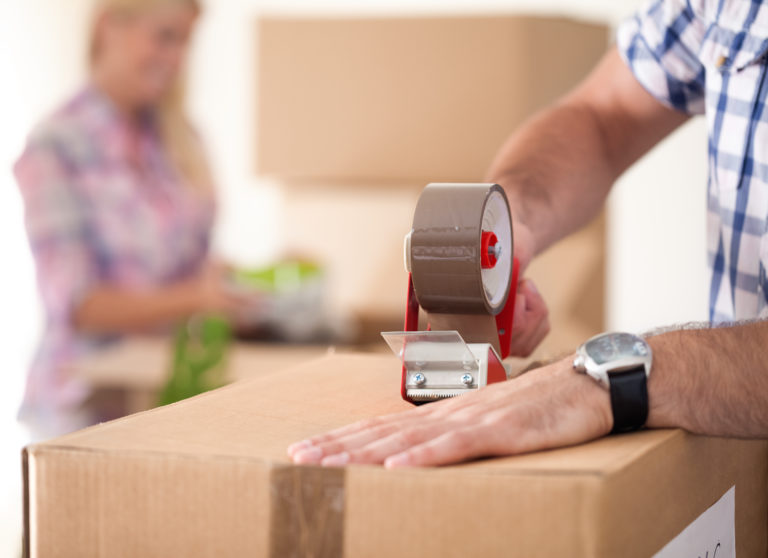Moving can be a complex and often stressful process, not only because you’re transitioning to a new home but also because managing your belongings can be challenging. Employing the right storage solutions is crucial to making your move more manageable and your new space more livable. Self-storage and portable storage containers are two highly effective options to help you maximize your space and keep your items safe during the transition.
When selecting a storage solution, consider your specific requirements, such as the volume of items you need to store, their sizes, and how often you’ll need access to them. While self-storage units offer secure, various-sized spaces for your belongings, portable storage containers conveniently deliver to your door, allowing you to pack at your own pace. Depending on your preference and local regulations, these containers can be stored off-site or on your property.
Before you begin packing for storage, take the opportunity to declutter. This process not only reduces the amount of items you need to store, but it can also positively impact your moving expenses and the organization of your new home. Sort your belongings methodically, deciding what to keep, donate, or discard. By doing so, you streamline your move, reduce costs, and ensure that everything you bring into your new space adds value and function. Effective decluttering and the right storage option enhance your moving experience and create a more organized home.
Understanding Different Storage Solutions
Knowing your various storage options enhances efficiency as you prepare for a move. The availability of different storage solutions allows you to choose what best fits your moving and storage needs, factoring in convenience, size, and protection for your belongings.
Self-Storage Units
Self-storage units offer a flexible and usually cost-effective way to temporarily or permanently store belongings. These units come in various sizes, from small lockers to large rooms, ensuring you can select a size that matches your inventory. Many storage facilities provide climate-controlled storage to protect sensitive items from extreme temperatures and humidity.
- Pros:
- Variety of unit sizes
- Option for climate control
- Enhanced security features
- Cons:
- Requires transport to the facility
- Variable access hours
Portable Storage Containers
Portable storage containers provide a convenient on-site storage solution. They are delivered to your location for packing at your own pace. Once filled, these containers can be stored at a secure facility on your property or moved directly to your new location.
- Pros:
- Convenience of packing at your location
- Flexibility in storage and transport
- Easy ground-level loading
- Cons:
- Limited to the container size delivered
- Permission may be required to place on the property
Specialized Storage Options
Specialized storage options are available for items such as vehicles, wine, or documents. Depending on the items’ needs, facilities might offer enhanced security, specialized climate control, or additional fire and theft protection.
- Pros:
- Tailored conditions and security
- Preferable for high-value or sensitive items
- Cons:
- Potentially higher cost
- May only cater to niche requirements
Strategies for Decluttering and Organization
Before you begin packing for a move, taking the time to declutter and organize your belongings can make the process more efficient. Let’s focus on strategies to help you sort and declutter, followed by organizing methods to maximize your storage space.
Effective Sorting and Decluttering
Start by thoroughly decluttering to reduce the number of items you need to move. Then, divide your belongings into categories: keep, sell, donate, or discard.
- Keep items you use regularly or that are of sentimental value.
- Sell Things in good condition that you no longer need.
- Donate Items that can benefit others and are not worth selling.
- Discard Broken or unusable things that cannot be salvaged.
Create a timeline and go room by room, applying the above categories. Use decluttering methods like the 12-12-12 Challenge – find 12 items to throw away, 12 to donate, and 12 to be returned to their proper place.
Organization and Maximizing Space
Once decluttered, focus on organization solutions that maximize your space. Efficient packing and the use of the right materials can be transformational.
- Storage Bins: Use clear storage bins for items divided by category, label them, and stack them efficiently.
- Shelving Units: For stability, install shelving units in your storage area to use vertical space, particularly for heavier items on the lower shelves.
When organizing, remember to:
- Place frequently used items at the front of the storage unit for easy access.
- Keep a detailed inventory list to track the locations of your stored items.
By adhering to these organizational principles, your move can become a less daunting, more efficient process.
Packing and Loading Tips for Maximizing Space
When moving, your items can save you space and time. It’s crucial to employ packing techniques and strategic loading approaches.
Professional Packing Techniques
- Box Size Consistency: Stick with two or three standardized box sizes to simplify stacking and maximize vertical space in your storage unit.
- Protection and Security: Use bubble wrap, packing paper, or clothes to protect fragile items. Ensure each box is filled to prevent collapsing when stacked but avoid over-packing, which can cause boxes to bulge or items to be damaged.
- List and Label: Clearly label each box’s contents and destination room. Consider numbering boxes and keeping a corresponding inventory list to aid organization and security.
Loading and Unpacking Strategies
- Foundation Matters: Begin by loading the heaviest items as the base layer in your storage unit to create a stable foundation.
- Maximize Vertical Space: If possible, store sofas on end and stack boxes from the heaviest at the bottom to the lightest at the top. This ensures both space maximization and protection of your belongings.
- Strategic Unpacking: Keep frequently accessed items near the front of the storage unit. Unpack systematically by starting with these items, then moving to the back of the unit and working your way out.
Selecting the Right Storage Unit and Features
When preparing to move, selecting the right storage solution is crucial. You want to ensure the unit’s size fits your items, the location is convenient, and features like security and accessibility meet your needs.
Determining Appropriate Size and Location
Size: Evaluate the volume of your belongings to choose a storage unit that offers sufficient space without overpaying for unused square footage. For example, a 10×10 unit offers about 800 cubic feet, comparable to an average spare bedroom. Use this as a baseline and adjust according to your inventory.
Location: Consider a facility’s proximity to your current or new residence. Closer locations offer easier access but may come with a higher price tag. Balance convenience with cost; if frequent access isn’t necessary, a more remote, cost-effective unit might suit your needs.
- For easy access, select a storage facility within a comfortable driving distance.
- Transportation to and from the unit should be straightforward – check for nearby highways or public transportation routes if you don’t have a personal vehicle.
Assessing Security and Accessibility Options
Security: Your belongings’ safety is paramount. Look for a unit with robust security features such as:
- 24/7 monitored surveillance
- Gated access with individual entry codes
- On-site management
- Well-lit premises
- Alarm systems for each unit
Accessibility: Consider how often you’ll need to access your storage unit. Facilities offering 24/7 access might be more conducive to your lifestyle, especially if you have an unpredictable schedule.
- Flexible access hours can be crucial to access your items outside traditional business hours.
- If you have delicate items, opt for a climate-controlled unit to protect against extreme temperatures and humidity.
Finding the right storage unit is a strategic decision that involves assessing the dimensions to accommodate your belongings and the features that ensure your items’ safety and accessibility. Consider these factors carefully to maximize your storage solution during your move.





